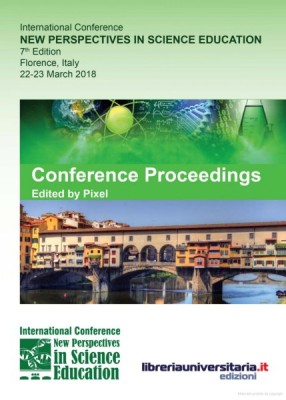
Nowadays, the general understanding of hi-end technologies progress is essentially referred to ITindustry, but the further progress in technology, e.g. in nanotechnologies, are based on a continuous fusion of different branches of modern science. Thus, inter-, multi-, and trans-disciplinarity is a must to consider issue. In addition, given a tremendous level of modern technologies we possess already, one may reasonably foresee that to pave a way towards more advanced technologies a solid knowledge may be just a partial prerequisite.
Therefore, creativity, synthesis and imagination, capacity to build something new using the pieces already available come into play. In such an endeavour, tinkering, as a relatively new approach in a learning curriculum, may be of extreme practical usefulness.
In this context, the research intends to test an innovative learning setting and to design pedagogicaldidactic tools based on "tinkering approach" in science education to be used outside the classroom. The learning path will be constructed on the base of the results achieved from an analysis on the use of informal activities in science education taking into account gender and geographical differences, and socio-economically disadvantaged groups by allowing these people to be close to science world and to live in an innovative way.
Tinkering methodology enables learners to understand, on their own, science by investigating tools, materials and exploring questions in which they are interested in. It is suitable for teaching and learning STEM subjects offering a wealth of opportunities for thinking through “making”. Both “tinkering” and “making” support the development of the capacity for an innovative problem solving by engaging learners in hands-on and creative building projects combining science, technology, engineering and math subjects.
This can ensure not only a variety of skills and mindsets, generally used in the classroom, but by supporting students to deal with engineered pieces of actual technology, treating those as tangible, manageable and adjustable objects according to their tasks’ needs, the approach, thus, intends to prepare learners for life and work in the real world.
Keywords: STEM education, learning by doing, inquiry-based learning, technology-enhanced learning.
How to cite this paper:
Dochshanov, A., & Tramonti, M. (2018, March). Re-making Classroom Borders with TINKERING Approach. In New Perspectives in Science Education 7th Edition 2018 Conference Proceedings. LibreriaUniversitaria.
 Nowadays, the general understanding of hi-end technologies progress is essentially referred to ITindustry, but the further progress in technology, e.g. in nanotechnologies, are based on a continuous fusion of different branches of modern science. Thus, inter-, multi-, and trans-disciplinarity is a must to consider issue. In addition, given a tremendous level of modern technologies we possess already, one may reasonably foresee that to pave a way towards more advanced technologies a solid knowledge may be just a partial prerequisite.
Nowadays, the general understanding of hi-end technologies progress is essentially referred to ITindustry, but the further progress in technology, e.g. in nanotechnologies, are based on a continuous fusion of different branches of modern science. Thus, inter-, multi-, and trans-disciplinarity is a must to consider issue. In addition, given a tremendous level of modern technologies we possess already, one may reasonably foresee that to pave a way towards more advanced technologies a solid knowledge may be just a partial prerequisite.